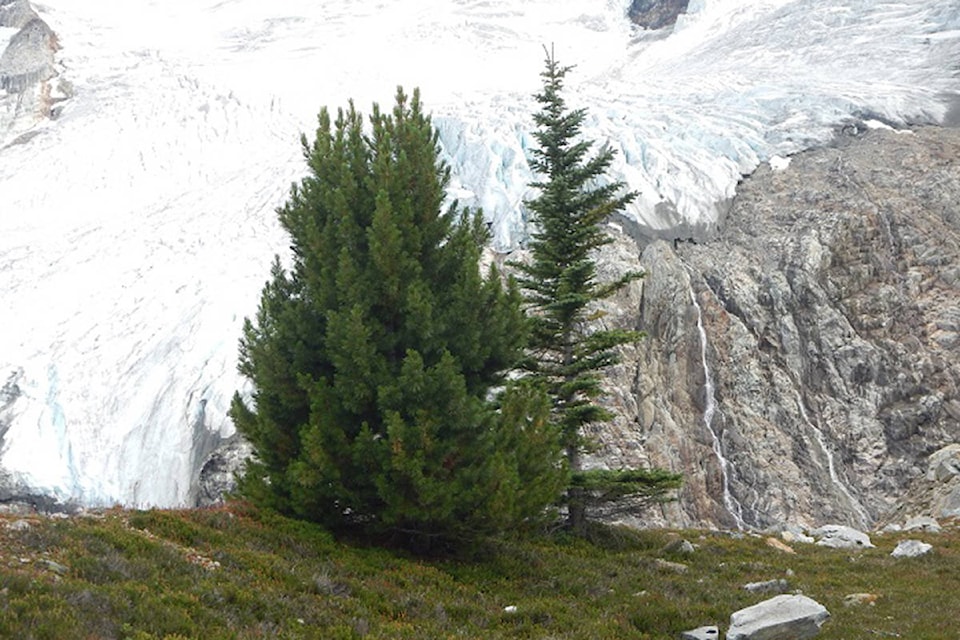Four projects in the region that are working to protect at-risk species, ecosystems and habitats are getting substantial funding through Columbia Basin Trust’s Ecosystem Enhancement Program, totalling $1.9 million.
“The environment of the Basin is part of what makes this area so special, and these projects build on the direction from people in the region that ecosystem enhancement is important—and a strategic priority of the Trust,” said Johnny Strilaeff, Columbia Basin Trust President and Chief Executive Officer. “We are committed to supporting large-scale initiatives like these that will have a measurable impact on Basin ecosystems, and are guided by partnerships, local knowledge and data.”
One of these projects is the work done by Kimberley-based Whitebark Pine Ecosystem Foundation of Canada (WPEF-C), who’ve been given $611,000.
“It’s definitely a huge boost for us, obviously given the dollar value,” said WPEF-C president Randy Moody. “It also provides that motivation, lights a fire under you if you will, simply because the condition of the grant isn’t that we get that money and run. We get that money and we have to come up with matching funds to basically extend the grant, which is a common thing with grants.”
READ MORE: Kimberley’s Randy Moody on the challenges and triumphs of the endangered whitebark pine
Year one will see the WPEF-C working to get money together and partnerships secured, but Moody said they’ll be fine in that respect.
In terms of what this means for recovery for the whitebark pine, Moody said is a really big project that will encompass a huge area located just south of Golden, over to just south of Revelstoke and north to Valemount and over the Alberta border from there.
It’s a huge area and an interesting area, Moody said, as it’s for a long time been a very inaccessible and relatively unknown part of the whitebark’s range.
“It’s going to be really enjoyable from that perspective, we’ll be looking at new populations of whitebark pine,” Moody explained. “And we know the threats are there we know that rust and fire have been impacting whitebark so it’s going to be a great project.”
Given the remoteness of the area, this funding is going to be crucial in making the work of WPEF-C vastly more efficient, for example allowing bigger crews to be flown up to work or survey in a helicopter.
The area geographically butts up against numerous national parks, Glacier, Jasper, Revelstoke, Banff, Kootenay, Yoho. Moody explained that while funding won’t pay for work within these parks, Parks Canada, takes an ecosystem view, so they know that what goes on right outside the boundaries of their parks impacts what happens within and vice versa.
“There’s really good opportunity for various parties within the national parks as well to assist with delivery of this project, so that’s going to be a really good collaboration piece, because we often do work with Parks Canada and this is sort of rubber hitting the road where we can lean on them they can lean on us a little bit to get a lot of work done on those boundary areas.”
The funding also helps to support the newly added executive director Barb Gass and the important work she does for the organization.
READ MORE: Whitebark Pine Ecosystem Foundation of Canada fills two important roles
Moody said that the early part of this project will see WPEF-C doing some concrete restoration work right out of the gate with planting of seedlings, but year one is also about laying the ground work for future years: collecting cones, surveying areas for planting and conducting daylighting.
Daylighting, or brushing, is the process of cutting competing species that surround a whitebark pine.
“It’s a poor competitor, it grows relatively slowly,” Moody said. “So one of the jobs is going to be out there finding where white barks growing but it’s in heavy competition and if you cut the competition back you’ve given that tree probably 30 to 40 years of competition free growing.”
Wildsight Golden’s five-year project The Upper Columbia Swallow Habitat Enhancement Project that seeks to conserve and enhance eight hectares of breeding and nesting habitat of barn and bank swallows received $432,000 from CBT.
Next, a project led by Wildlife Conservation Society Canada to increase bat populations through wetland restoration got $207,000.
Finally, the Pollination Pathway Climate Adaptation Initiative who strive to enhance plant-pollinator networks in diverse plant communities throughout the Lower Columbia have received $650,000.
“The pollination of flowering plants by animals is a critical ecosystem service. The decline of pollinators has many causes, including the decline of our natural areas and thriving native plant populations,” said Valerie Huff, Restoration Botanist with the Kootenay Native Plant Society. “Camas and milkweed are anchor plants for pollinators in the region’s ecosystem, but there are many other plants included in the Pollination Pathway initiative that will support many species of endangered and at-risk pollinators.”
paul.rodgers@kimberleybulletin
Like us on Facebook and follow us on Twitter
